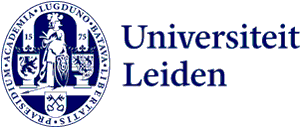Improving the prospects of at-risk youth
How can mentors and social workers foster the vocational identity of at-risk youth and improve their prospects? This is the subject of Rineke Keijzer-Groot's thesis. She is a dual PhD candidate at ICLON and Dual PhD Centre. Defence on 18 November.
Participating in society
At-risk youth have vulnerable school careers. They attend education at the lowest level of senior secondary vocational education or a special rebound program, have not been graduated and are at risk of not receiving a diploma. This decreases their chances of work. Also, their school careers are vulnerable because many of them encounter personal or social problems, which may distract their attention from school or may even hinder them to continue education. It leads to at-risk youth being a heterogeneous group.
Yet we wish at-risk youth to participate in society and to live independently. A strong vocational identity can counteract these risks. A vocational identity expresses who you are as a worker: who you are, what you want to be, and how you get there.
Individual characteristics and vocational identity
According to the definition of this dissertation, vocational identity consists of three components:
- vocational self-image (being aware of capacities and interests concerning work);
- vocational future image (being aware of ambitions and goals concerning work);
- vocational self-efficacy (beliefs about own successfulness).
This dissertation, first, addresses the question to what extent several individual characteristics of at-risk youth relate to their vocational identity. Subsequently it was studied whether relationships between at-risk youth’ vocational identity, at the one hand, and their resilience or school engagement respectively, at the other hand, were evenly strong for all or whether the strength of relationships would differ for different young people. Malleable characteristics receive special attention in this respect, in order to provide practitioners in education and social work with suggestions to improve their actions.
In the context of special curricula aimed at at-risk youth, mentors and social workers have individual meetings with their students and pupils. That is why this dissertation also addresses the question to which mentor qualities the at-risk students and their mentors attach most value.

Resilience and school engagement
Many individual characteristics of at-risk youth, both malleable and non-malleable, relate to their vocational identity. The relationships between vocational identity, on the one hand, and resilience and school engagement respectively, on the other hand, are not evenly strong for all at-risk youth. They are stronger for males compared to females, younger subgroups compared to older subgroups, for those from higher socioeconomic background, and for those who are less motivated and with less pronounced personality traits. This implies that especially these young people benefit from encouraging these characteristics.
Good mentors are emotionally responsive
The most valuable mentor qualities consist of mentor tasks, relationships between mentor and student, and mentor characteristics. Results show a tension between emotional proximity and professional distance between which mentors have to navigate. Emotional responsiveness has been proposed as new concept for a good mentor in the context of special educational programs for at-risk youth; it encompasses empathy, sincere care, openness, and confidentiality.
